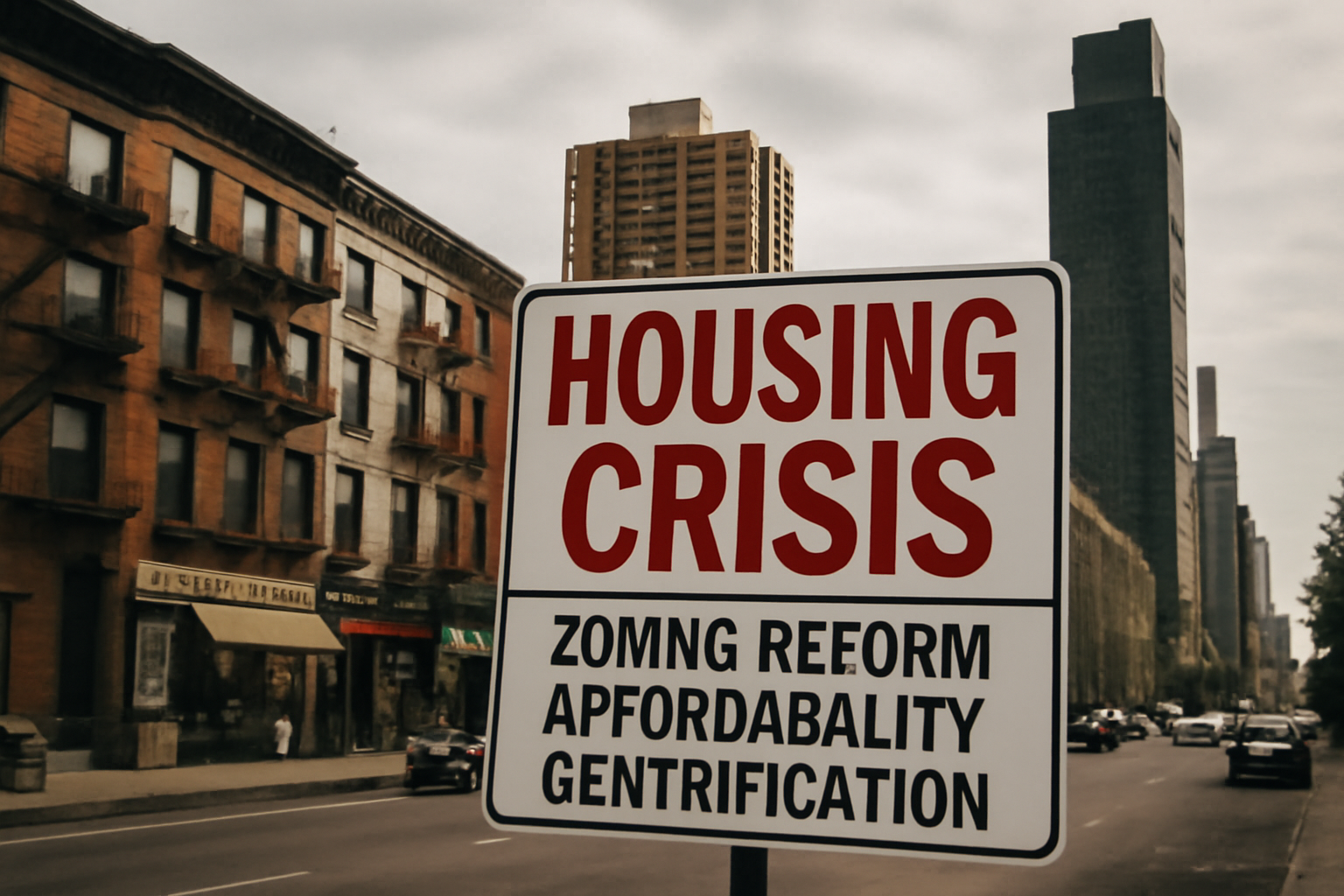New York City, often hailed as the “city that never sleeps,” has always been a symbol of progress, culture, and opportunity. However, beneath the glossy surface of skyscrapers and iconic landmarks, the city has been grappling with a housing affordability crisis that has only intensified in recent years. As of May 2025, the debate over how to tackle this crisis—particularly in terms of zoning laws and gentrification—is one of the most contentious issues facing the city.
The Housing Affordability Crisis
For many New Yorkers, the dream of homeownership or even renting an affordable apartment has become increasingly out of reach. Over the last two decades, New York has seen an explosion in property prices and rents. According to recent data, the median rent in Manhattan has surpassed $4,000 per month, while the median home price in Brooklyn has risen to over $800,000. In neighborhoods like Queens, even more modest homes are priced well over $500,000.
This affordability gap has led to a dramatic rise in homelessness, with thousands of individuals and families struggling to find stable, affordable housing. New York City’s homeless population has reached its highest level in decades, and the city’s shelter system is under extreme strain.
The Push for Zoning Reform
In response to the housing crisis, Mayor Eric Adams has championed a plan to overhaul New York City’s zoning laws. Zoning regulations have long governed the types of buildings that can be constructed in specific areas, determining whether a building can be residential, commercial, or industrial. These laws are meant to ensure that development aligns with the city’s long-term planning goals, but critics argue that they have led to overly restrictive building practices, contributing to the housing shortage.
The mayor’s zoning reform proposal aims to increase the availability of affordable housing by allowing for more high-density construction in neighborhoods that have historically been limited to low- and mid-rise buildings. Proponents argue that relaxing these restrictions will allow developers to build more affordable housing units, reducing the demand-supply imbalance that drives up prices.
However, this proposal has faced significant opposition from various community groups, including tenant activists, local politicians, and residents in wealthier neighborhoods. They argue that loosening zoning laws could exacerbate existing issues, such as overcrowding, traffic congestion, and the displacement of long-time residents. In particular, concerns have been raised about the potential for gentrification, where low-income residents are priced out of their homes as neighborhoods become more desirable to wealthier individuals.
Gentrification: A Double-Edged Sword
Gentrification has become a flashpoint in the debate over housing policy in New York City. Over the past decade, neighborhoods such as Williamsburg, Bushwick, and parts of the Bronx have experienced rapid development, attracting higher-income residents and businesses. While this influx of investment has improved infrastructure and amenities in some areas, it has also resulted in the displacement of lower-income residents who can no longer afford rising rents.
Critics of gentrification argue that it perpetuates inequality, as the cultural fabric of working-class neighborhoods is replaced with luxury condos, high-end stores, and trendy restaurants. Many fear that further gentrification, fueled by zoning reforms, will exacerbate these problems, pushing even more long-term residents out of the city’s most affordable areas.
On the other hand, some argue that gentrification is a natural part of urban development, providing opportunities for revitalization and improved living conditions. Proponents of zoning changes believe that increased density could help offset the negative effects of gentrification by ensuring that more affordable housing units are available to balance the demand from wealthier residents.
The Role of Tech and Green Housing
Another element of the debate involves the role of technology and green housing in shaping the future of New York City’s housing landscape. As part of the city’s plan to address climate change and housing shortages, there have been proposals to integrate sustainable building practices into new developments. This includes the use of eco-friendly materials, energy-efficient designs, and smart home technology.
While these innovations are seen as crucial for the city’s future, they have also raised concerns about affordability. Some argue that “green” buildings often come with higher construction costs, which may ultimately be passed on to renters and buyers, further pushing up the cost of housing. Critics worry that the focus on luxury eco-friendly buildings could prioritize the needs of the wealthy over those of working-class New Yorkers.
The Political Divide
The issue of housing affordability has also highlighted the deepening political divide in the city. Progressives argue for a more interventionist approach, including rent control measures and expanded public housing, while conservatives advocate for market-driven solutions, including deregulating zoning laws to allow the free market to address the housing shortage.
The political stakes are high, as housing policy is a key issue in New York City’s upcoming mayoral election. The future of zoning reform will likely depend on who holds power at City Hall and how much influence local communities and advocacy groups can have on the policymaking process.
A Solution in Sight?
As New York City continues to grow, the need for a comprehensive housing solution becomes ever more urgent. Balancing the need for more affordable housing with the risk of gentrification, ensuring sustainability, and addressing the concerns of both renters and developers is no small task. With zoning reforms, affordable housing projects, and climate-conscious initiatives on the table, the city’s leaders will have to carefully navigate these challenges in order to create a housing market that works for everyone.
While there is no simple solution to New York’s housing crisis, the ongoing debate is an important reflection of the city’s broader struggles with inequality, urban development, and the future of its diverse communities.



